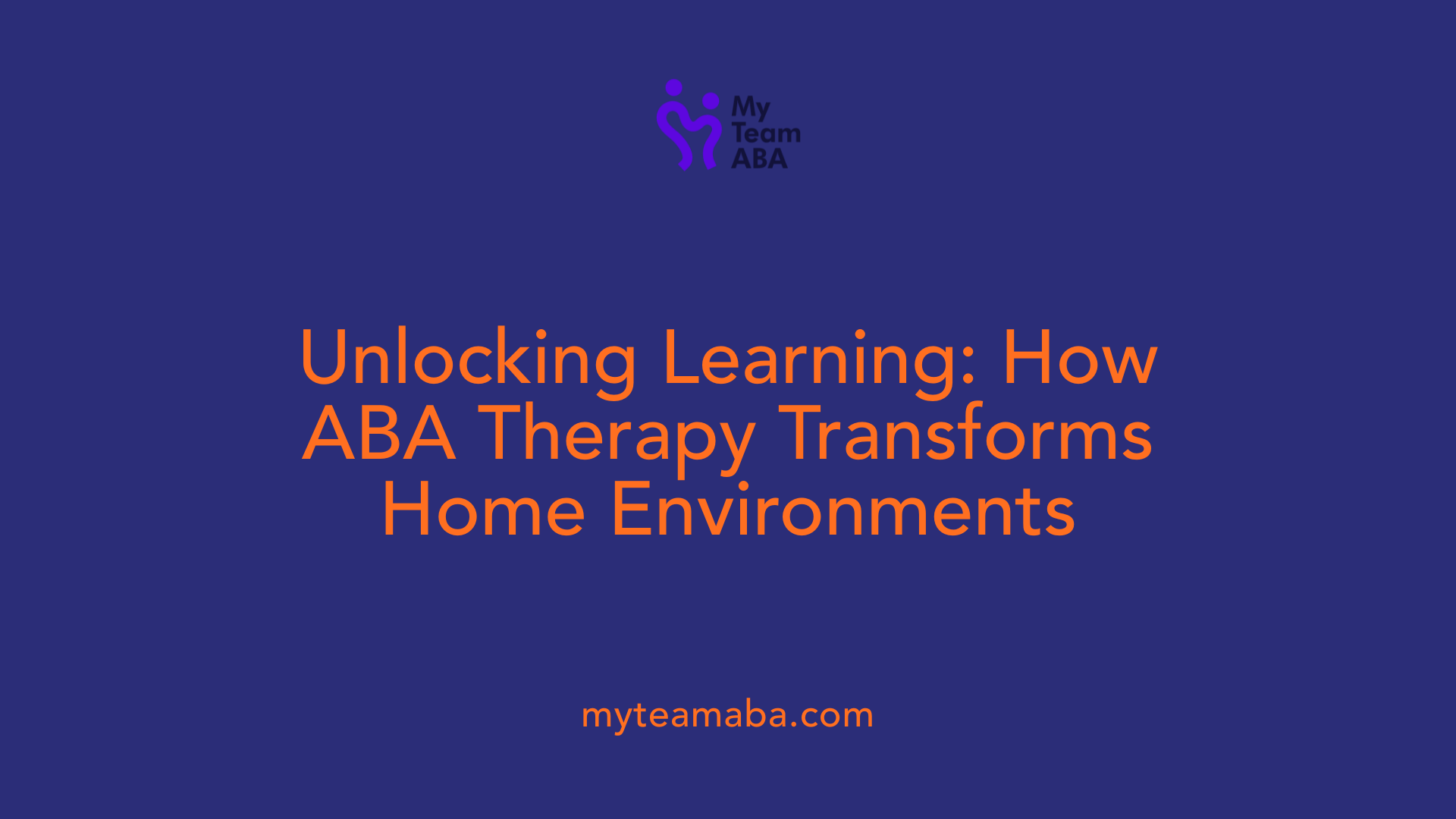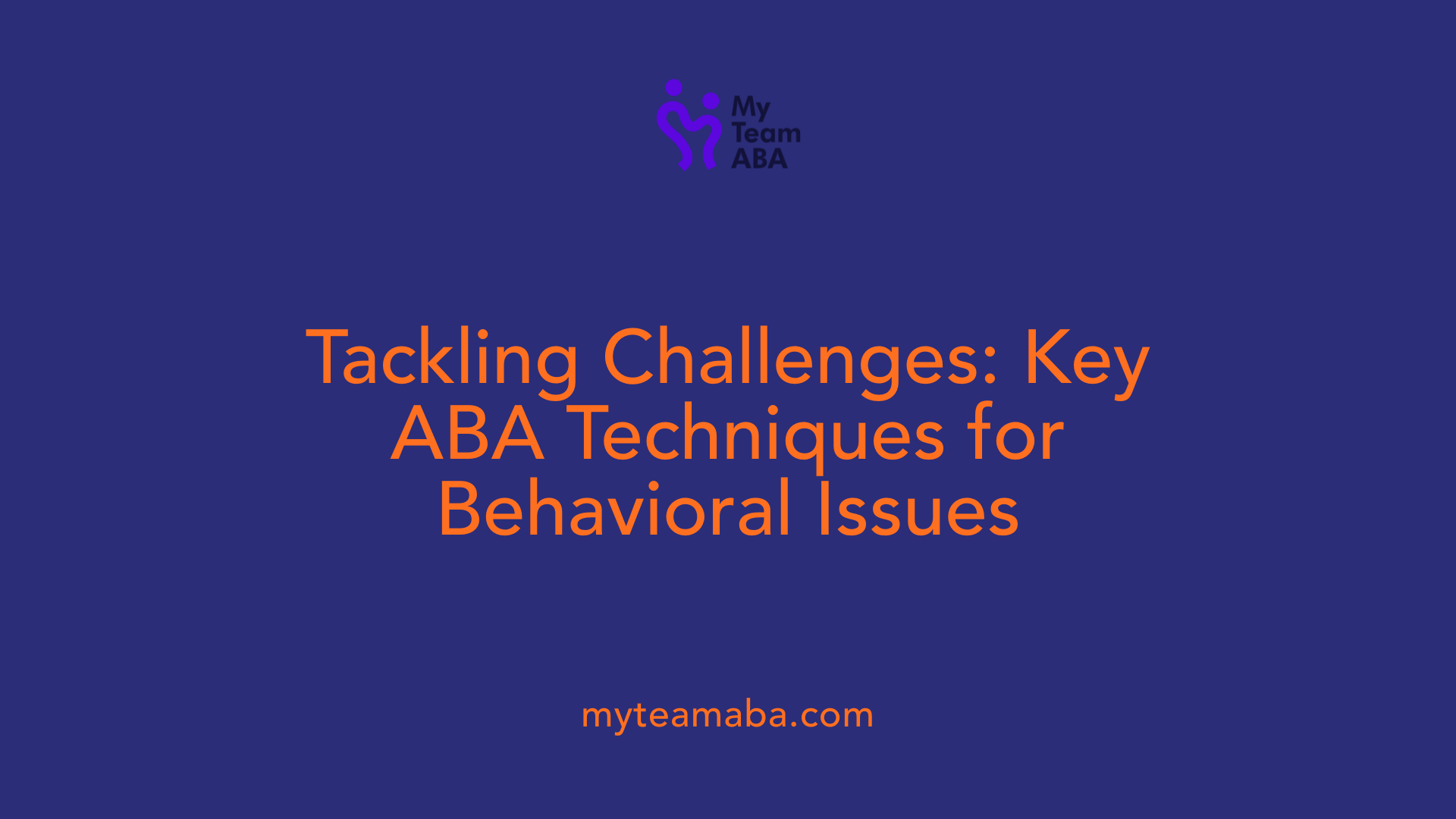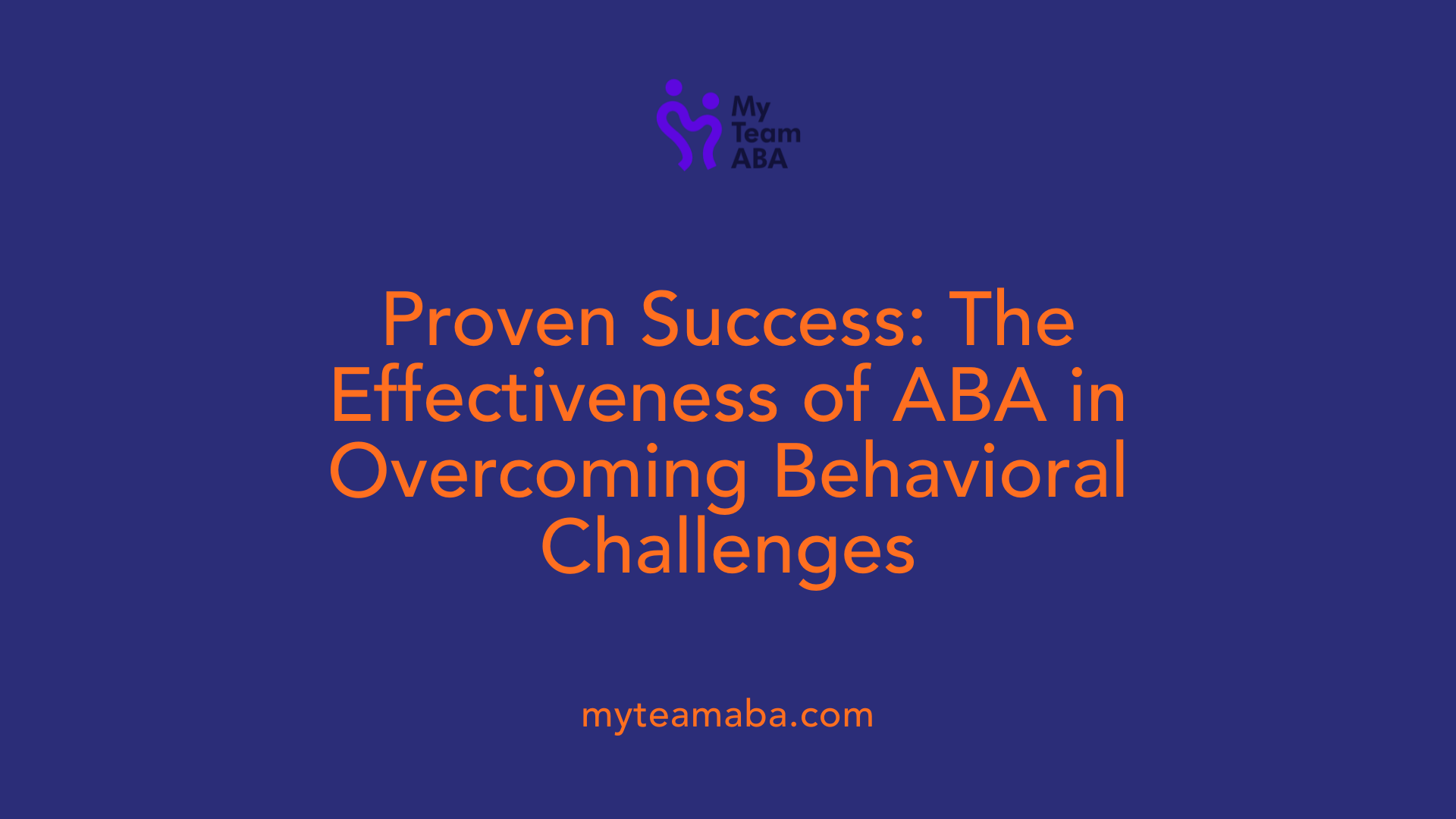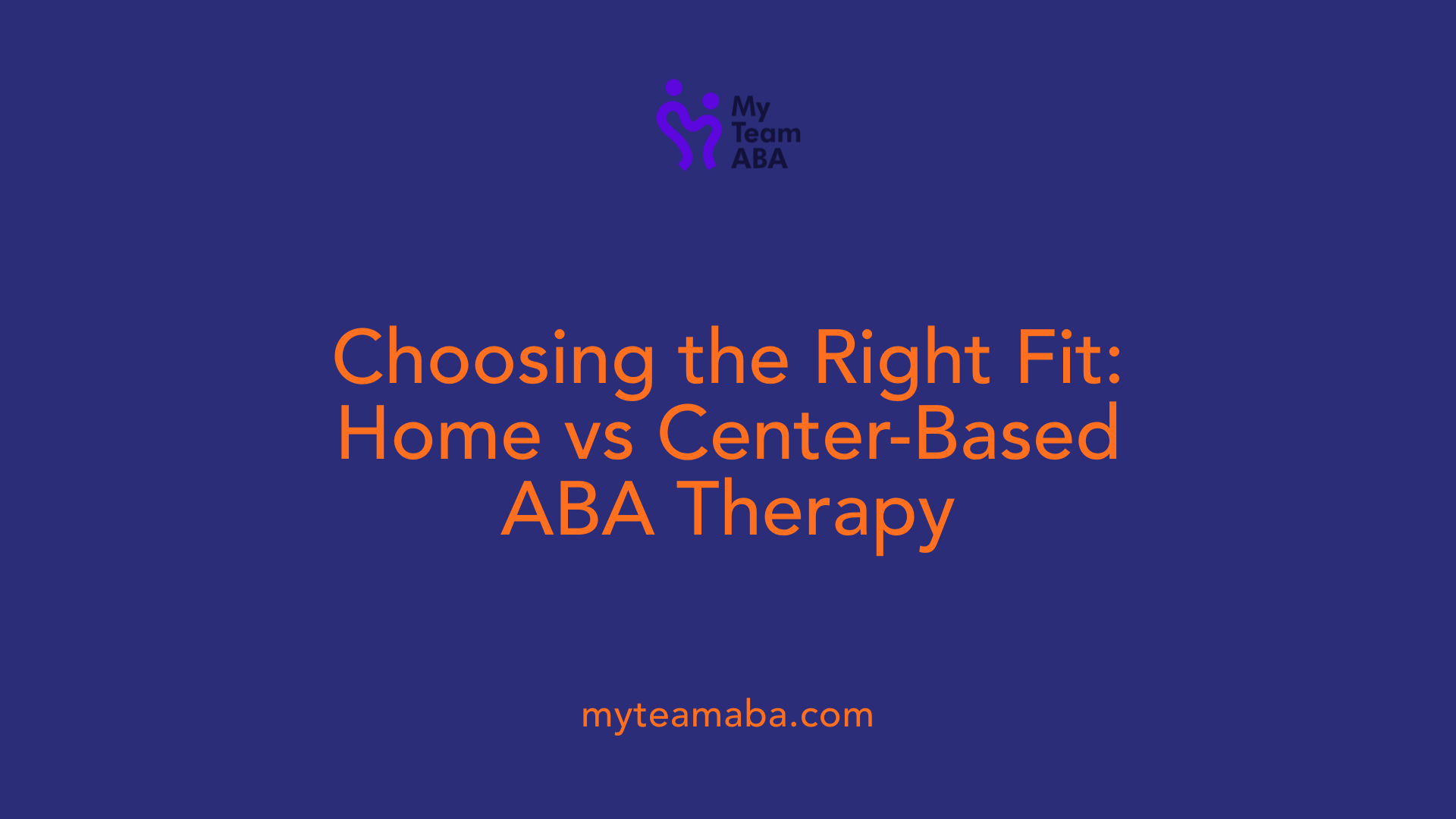The role of ABA therapy in managing problematic behaviors at home
January 28, 2025
Effective Home-Based Strategies Using ABA Therapy

Understanding ABA Therapy's Impact at Home
Applied Behavior Analysis (ABA) therapy, a well-recognized method especially for children with autism, emphasizes tailored strategies to enhance positive behaviors and minimize disruptive ones. By setting the foundation for improved conduct through various techniques, ABA therapy paves the way for harmonious family interactions at home.
How ABA Therapy Operates in a Home Setting

How does ABA therapy work at home?
ABA therapy at home effectively incorporates therapeutic techniques into daily family interactions, making learning organic and intuitive for children. This approach allows children to practice new skills in familiar surroundings. During in-home sessions, certified behavior analysts assess behaviors and provide family-specific strategies rooted in the child's unique challenges and strengths.
Therapists observe interactions and guide parents in using familiar toys and routines. Techniques such as Natural Environment Teaching (NET) capitalize on the child’s daily experiences, weaving learning into fun and engaging activities. Moreover, Discrete Trial Training (DTT) is used to break down complex tasks into simple, achievable steps.
Through consistent application, children are motivated to learn, connecting skills to real-life scenarios. This routine provides structure, which is essential for promoting independent living skills.
Integration of ABA techniques in family routines
Integrating ABA techniques into family routines is paramount for maximizing therapy's effectiveness. For instance, parents can implement positive reinforcement by rewarding children for desired behaviors, which supports skill reinforcement outside of therapy sessions. Setting clear household rules and expectations aligns with ABA principles, enhancing compliance from children.
Visual aids, such as charts and schedules, can help children understand daily tasks, facilitating smoother routines and transitions. Maintaining consistency in these practices boosts children’s ability to apply learned behaviors across various contexts.
Importance of family participation
Family involvement is a cornerstone of successful ABA therapy. Active parental participation not only reinforces learning but also strengthens the bond between parents and children. When parents model desired behaviors, children learn through observation and imitation.
Additionally, by collaborating with therapists, parents gain valuable insights into their child's skills and how to support ongoing development. This partnership fosters a proactive approach towards behavior management that can reduce stress and improve overall family dynamics. Studies show that siblings also benefit, experiencing improved relationships due to enhanced communication within the family.
Ultimately, a nurturing home environment where ABA strategies are consistently applied helps children thrive, reinforcing skills and promoting behavioral growth.
The Advantages of Conducting ABA Therapy at Home

What are the benefits of in-home ABA therapy?
In-home ABA therapy presents numerous benefits for children with autism and their families. One of the main advantages is the comforting and familiar environment it offers, which helps reduce anxiety and promotes better engagement during therapy sessions. Children often feel more at ease in their own space, which can lead to more effective learning and interaction.
Additionally, in-home therapy allows for the seamless integration of techniques into the family’s daily routine. This promotes the application of learned skills in real-life situations, enhancing the child’s ability to generalize those skills outside of therapy sessions. When therapeutic strategies become part of everyday life, it reinforces learning and contributes to long-term success.
Moreover, in-home ABA therapy encourages active family involvement. Parents and siblings can observe and practice techniques under the guidance of a therapist, which enhances the family's capacity to support their child's development. This involvement fosters stronger relationships among family members and provides a collaborative approach to managing challenging behaviors. The personalized nature of these interventions, along with the flexibility in scheduling, leads to improved therapeutic outcomes and helps cultivate a harmonious home environment.
ABA Techniques for Handling Behavioral Issues

What are common techniques and interventions used in ABA for addressing behavioral problems?
Applied Behavior Analysis (ABA) utilizes a variety of techniques to tackle behavioral issues among children, particularly those with autism. Here are several common strategies employed:
Reinforcement Strategies: Positive reinforcement is foundational in ABA therapy. By rewarding appropriate behaviors, children are more likely to repeat them in the future. Rewards can include verbal praises, tokens, or privileges, tailored to what motivates the individual child.
Role of BCBAs: Board-Certified Behavior Analysts (BCBAs) are pivotal in ABA therapy. They conduct thorough assessments of a child’s behavior, identify specific needs, and devise customized treatment plans. Their expertise ensures that interventions are based on evidence and suited to the child’s unique situation.
Structuring Routines: Consistency is essential for children with autism. Structuring daily routines provides a sense of security and predictability. Visual schedules can help children understand what to expect throughout the day, reducing anxiety and the likelihood of problematic behaviors, especially during outings.
Practice for Outings: Preparing for community outings is also vital. Preceding these events with practice helps mitigate unexpected challenges like elopement or meltdowns. Building the child’s confidence with guided interventions during outings promotes positive experiences.
Overall, effectively applying these techniques fosters an environment where positive behaviors are reinforced, leading to improved social skills and communication for children with autism.
Effectiveness of ABA in Addressing Behavioral Problems

Does ABA therapy help with behavior problems?
Applied Behavior Analysis (ABA) therapy is highly effective in addressing behavioral problems, particularly for children with autism spectrum disorder (ASD). By utilizing evidence-based techniques, ABA focuses on reinforcing positive behaviors while diminishing negative ones. This method can lead to substantial improvements in social interactions, communication skills, and overall skill development.
Numerous studies have concluded that early and intensive ABA therapy results in significant developmental gains, especially when tailored to the individual's specific needs. The therapy involves an assessment by certified professionals, who design personalized treatment plans that adapt to each child's unique circumstances.
Gold-standard treatment for autism
Despite some criticism, ABA is widely recognized as the gold-standard treatment for autism. Its structured framework fosters a positive environment through techniques like positive reinforcement, prompting, and modeling, which can effectively manage problematic behaviors.
Here’s a quick look at the essentials that underscore ABA's effectiveness:
| Aspect | Description | Benefits |
|---|---|---|
| Evidence-based Benefits | Supported by research focusing on skill improvement and behavior reduction | Enhances social skills and communication |
| Personalized Plans | Individualized treatment plans developed by certified professionals | Targets unique needs for best outcomes |
| Comprehensive Approach | Includes strategies such as Discrete Trial Teaching and Functional Communication Training | Builds communication and daily living skills |
Summary: With its focused, evidence-based practices, ABA therapy remains a cornerstone for addressing behavioral challenges in children, promoting not only immediate behavior change but also long-term skill development.
Practical Application: Implementing ABA Strategies at Home
How can parents effectively implement ABA strategies at home?
Parents can effectively implement ABA strategies by creating a structured environment conducive to learning. This involves setting up spaces where specific behaviors can be practiced, minimizing distractions, and ensuring that the environment supports desired behaviors.
Creating structured environments
A structured environment reinforces learning through consistent cues and expectations. By organizing learning spaces, parents can help their children understand what is expected in various situations. For example, designating a quiet area for homework can signal the child that it’s time to focus.
Consistent routines
Establishing consistent routines is paramount in ABA practices. Parents should create daily schedules that outline activities and transitions clearly. This helps children anticipate what comes next, reducing anxiety and promoting compliance. Using visuals, like charts or apps, can assist in making routines more accessible.
Tracking progress and adjustments
Tracking progress is integral to applying ABA strategies effectively. Parents should regularly monitor behaviors and document instances of both positive behavior and challenges. This data helps identify patterns, allowing for timely adjustments to interventions as necessary. Tools like behavior charts or journals can be beneficial for this purpose.
Through collaboration and training on ABA principles, parents can enhance their skills, support their child's unique needs, and better manage behaviors at home.
Comparing Home-Based and Center-Based ABA Therapy

Differences in settings
Home-based ABA therapy occurs in the child’s familiar environment, allowing for immediate application of learned skills in everyday situations. In contrast, center-based ABA therapy takes place in a structured setting specifically designed for therapeutic activities, which can help with focus but might lack the naturalistic context of home life.
Impact on behavior management
Behavior management methods can differ significantly in these environments. At home, parents can actively participate in reinforcing positive behaviors with real-life consequences, which encourages consistency across settings. In center-based therapy, children may encounter a variety of peers, enhancing social learning but potentially introducing new distractions that may complicate behavior management.
Benefits of each approach
Both approaches offer distinct advantages. Home-based therapy promotes generalization of skills to daily routines and fosters a cooperative family dynamic. It allows parents to directly implement strategies with their children. Conversely, center-based ABA therapy often provides access to a broader range of specialized resources and trained therapists, which may enhance the quality of the therapeutic experience.
| Approach | Key Feature | Potential Benefit |
|---|---|---|
| Home-Based | Natural learning environment | Encourages real-life application of skills |
| Center-Based | Structured therapeutic setting | Access to specialized resources |
Conclusion
Home-based ABA therapy offers a unique and effective mechanism for managing challenging behaviors by integrating therapeutic interventions within the comfort and familiarity of one's home. Continual interaction and reinforcement of learned skills aid in creating a supportive environment conducive to child development. By maintaining structured, evidence-based frameworks facilitated through family involvement, ABA therapy substantiates itself as a pivotal strategy in achieving sustainable behavioral progress.
References
- Applied Behavior Analysis (ABA) | Autism Speaks
- How to Implement Effective ABA Therapy Strategies at Home
- Behavioral Management Therapy for Autism | NICHD
- Home based ABA therapy - Arise Autism Center
- How ABA Therapy Can Affect Home Life
- 7 Surprising Benefits of ABA Therapy for Kids You Need to Know
- ABA Therapy for Parents: Your Guide to the Basics
- Tackling Problem Behaviors | Marcus Autism Center
